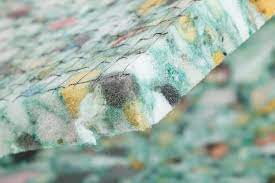Carpet padding is often an overlooked aspect of flooring installations, overshadowed by the focus on carpet style and color. However, its thickness plays a pivotal role in determining the overall comfort, durability, and performance of the flooring. Understanding the nuances of different thicknesses of carpet padding is crucial for homeowners, contractors, and designers alike, as it directly impacts the quality and longevity of the flooring. In this comprehensive exploration, we will delve into the intricacies of carpet padding thickness, examining its effects on comfort, durability, and suitability for various environments.
The Importance of Carpet Padding
 Carpet padding, also known as carpet underlay, serves several essential functions in flooring installations. Primarily, it provides cushioning underfoot, enhancing comfort and reducing fatigue from prolonged standing or walking. Additionally, carpet padding acts as a protective barrier between the carpet and the subfloor, minimizing wear and tear on the carpet fibers and extending its lifespan. Furthermore, carpet padding contributes to thermal and sound insulation, creating a more comfortable and acoustically pleasing indoor environment. Without proper padding, carpets are prone to premature wear, reduced comfort, and increased noise transmission, undermining the overall quality of the flooring.
Carpet padding, also known as carpet underlay, serves several essential functions in flooring installations. Primarily, it provides cushioning underfoot, enhancing comfort and reducing fatigue from prolonged standing or walking. Additionally, carpet padding acts as a protective barrier between the carpet and the subfloor, minimizing wear and tear on the carpet fibers and extending its lifespan. Furthermore, carpet padding contributes to thermal and sound insulation, creating a more comfortable and acoustically pleasing indoor environment. Without proper padding, carpets are prone to premature wear, reduced comfort, and increased noise transmission, undermining the overall quality of the flooring.
Thin Carpet Padding: The Budget-Friendly Option
Thin carpet padding, typically ranging from 1/4 inch to 3/8 inch in thickness, is a cost-effective choice for budget-conscious consumers. While it provides minimal cushioning and insulation compared to thicker options, it is suitable for low-traffic areas where longevity is not a primary concern. Thin padding is commonly used in rental properties, offices, and commercial spaces where cost efficiency takes precedence over luxurious comfort. Despite its affordability, thin padding may lack the resilience and support necessary to withstand heavy foot traffic over an extended period, leading to premature wear and reduced carpet lifespan.
Medium Carpet Padding: Striking a Balance
Medium carpet padding, ranging from 3/8 inch to 1/2 inch in thickness, offers a balanced combination of comfort, durability, and affordability. It provides adequate cushioning underfoot without the excessive softness or firmness associated with thinner or thicker options, making it suitable for residential spaces with moderate foot traffic. Medium padding is commonly installed in living rooms, bedrooms, and hallways, where comfort and durability are paramount. While slightly more expensive than thin padding, medium padding offers improved support for the carpet, reducing wear and tear and extending its lifespan in moderate-traffic areas.
Thick Carpet Padding: The Premium Choice
Thick carpet padding, ranging from 5/8 inch to 7/8 inch in thickness, represents the premium option for maximum comfort and durability. It offers luxurious cushioning underfoot, creating a plush and indulgent feel that enhances the overall comfort of the flooring. Thick padding provides superior support to the carpet, minimizing compression and preventing premature wear in high-traffic areas such as entryways, stairs, and family rooms. Furthermore, thick padding offers excellent thermal and sound insulation properties, creating a quieter and more comfortable indoor environment. While thick padding comes at a higher cost compared to thinner options, its premium quality and enhanced features justify the investment for homeowners seeking unparalleled comfort and longevity in their flooring.
Factors to Consider When Choosing Carpet Padding Thickness
When selecting the thickness of carpet padding for a flooring project, several factors should be taken into account to ensure optimal performance and satisfaction:
Traffic Levels: Consider the amount of foot traffic the area is expected to endure on a daily basis. High-traffic areas require thicker padding to withstand the constant wear and tear, while low-traffic areas may suffice with thinner padding.
Comfort Requirements: Evaluate the desired level of cushioning and softness underfoot. Thicker padding offers a more luxurious feel and enhanced comfort, while thinner padding may feel firmer and less indulgent.
Budget Constraints: Determine the budget available for the flooring project and allocate funds accordingly for carpet padding. While thicker padding may offer superior comfort and durability, it comes at a higher cost compared to thinner options.
Specific Needs: Take into consideration any special requirements or preferences, such as noise reduction, moisture resistance, or hypoallergenic properties. Certain types of padding may offer additional benefits tailored to specific needs, enhancing the overall performance of the flooring.
Choosing the Right Thickness for Your Flooring Project
Ultimately, selecting the right thickness of carpet padding is essential to achieving the desired results in a flooring project. By understanding the implications of different thickness options and considering various factors such as traffic levels, comfort requirements, budget constraints, and specific needs, homeowners can make informed decisions that optimize the comfort, durability, and performance of their carpeted floors. Whether opting for thin, medium, or thick padding, each thickness offers unique benefits and trade-offs, allowing homeowners to tailor their flooring solutions to suit their preferences and lifestyle. With proper consideration and guidance from flooring professionals, homeowners can create inviting and comfortable living spaces that enhance the beauty and functionality of their homes for years to come.



